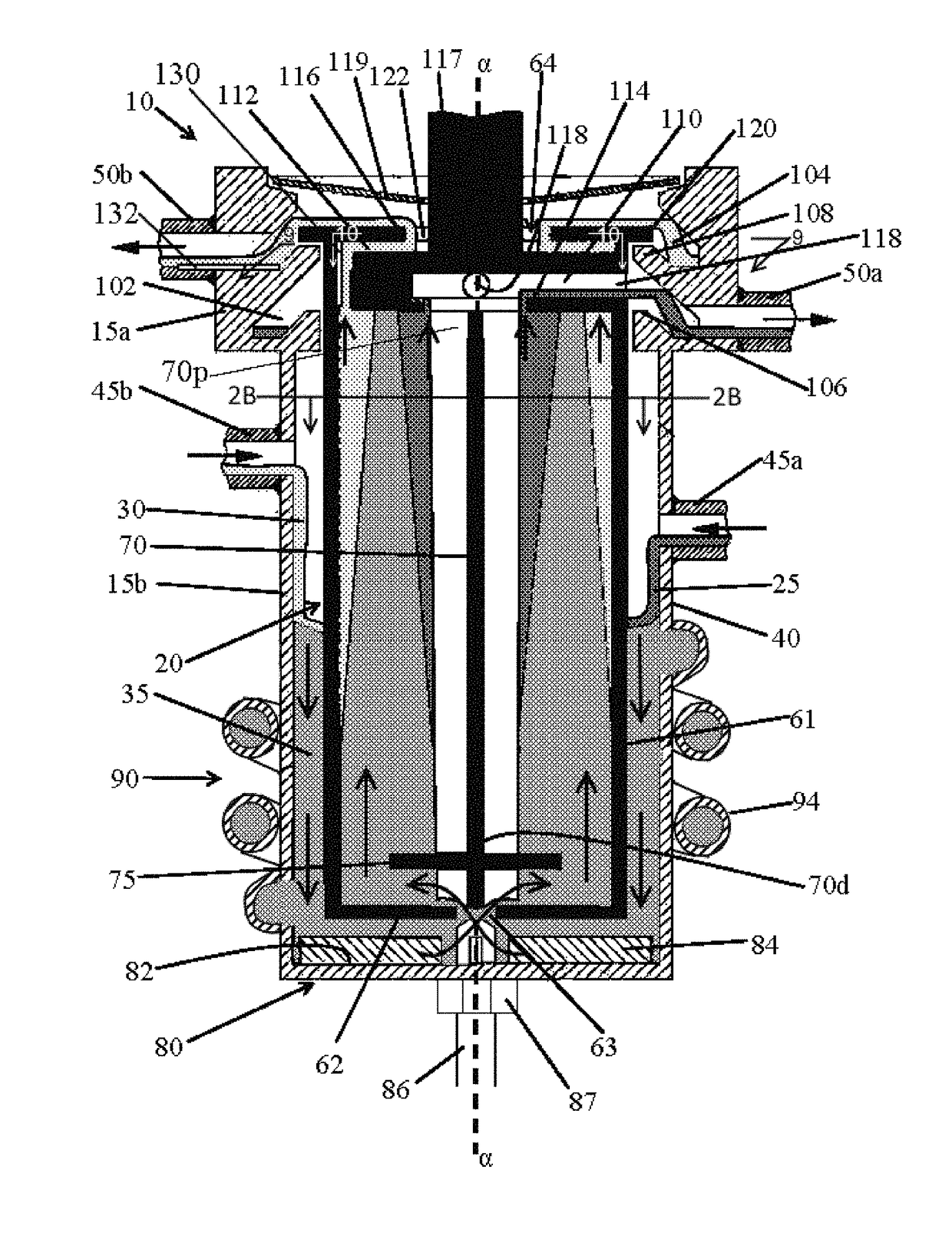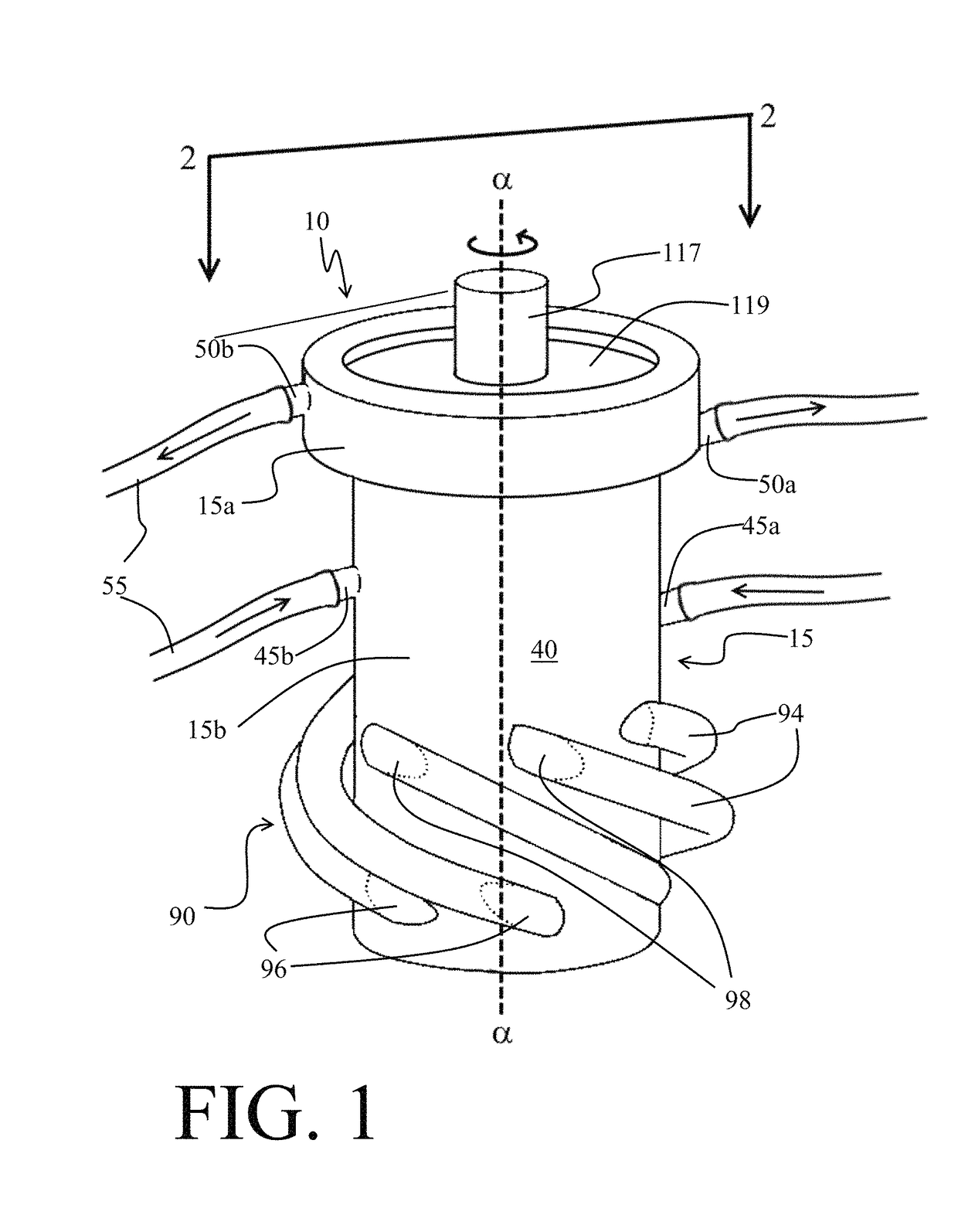3D printed modular centrifugal contactors and method for separating moieties using 3D printed optimized surfaces
a contactor and modular technology, applied in the field of centrifugal contactors, can solve the problems of reducing the efficiency of the transmutation process, interfering with neutron absorption, and transplutonium actinides not having stable higher oxidation states, etc., to achieve long residence times in the mixing zone, reduce the effective entrance flow area, and ensure the effect of stability
- Summary
- Abstract
- Description
- Claims
- Application Information
AI Technical Summary
Benefits of technology
Problems solved by technology
Method used
Image
Examples
example
[0100]A 3D printed unit made of PMMA was used with 5M HCl—a material highly corrosive to stainless steel. Other chemicals used were tetrachloroethylene and tributyl phosphate (as organic solvent) and ammonium hydroxide (as stripping phase). Following a suite of tests to refine process conditions and confirm contactor operation) the extraction of molybdenum from 5M HCl was ran for approximately 4 hrs and a total of approximately 4 L of feed solution containing molybdenum was processed successfully. Stripping with ammonium hydroxide was done the following day using the same contactor unit.
[0101]The use of transparent PMMA for the rotor allowed for visual identification of precipitates. As a side note, a 3D printed contactor body configured for continuous recycle with attached elevated printed tanks was used as a wash station for the precipitate laden rotor. This unit was designed simply as a demo for contactors, but found a practical application. These tests clearly demonstrated that ...
PUM
 Login to View More
Login to View More Abstract
Description
Claims
Application Information
 Login to View More
Login to View More - R&D
- Intellectual Property
- Life Sciences
- Materials
- Tech Scout
- Unparalleled Data Quality
- Higher Quality Content
- 60% Fewer Hallucinations
Browse by: Latest US Patents, China's latest patents, Technical Efficacy Thesaurus, Application Domain, Technology Topic, Popular Technical Reports.
© 2025 PatSnap. All rights reserved.Legal|Privacy policy|Modern Slavery Act Transparency Statement|Sitemap|About US| Contact US: help@patsnap.com



